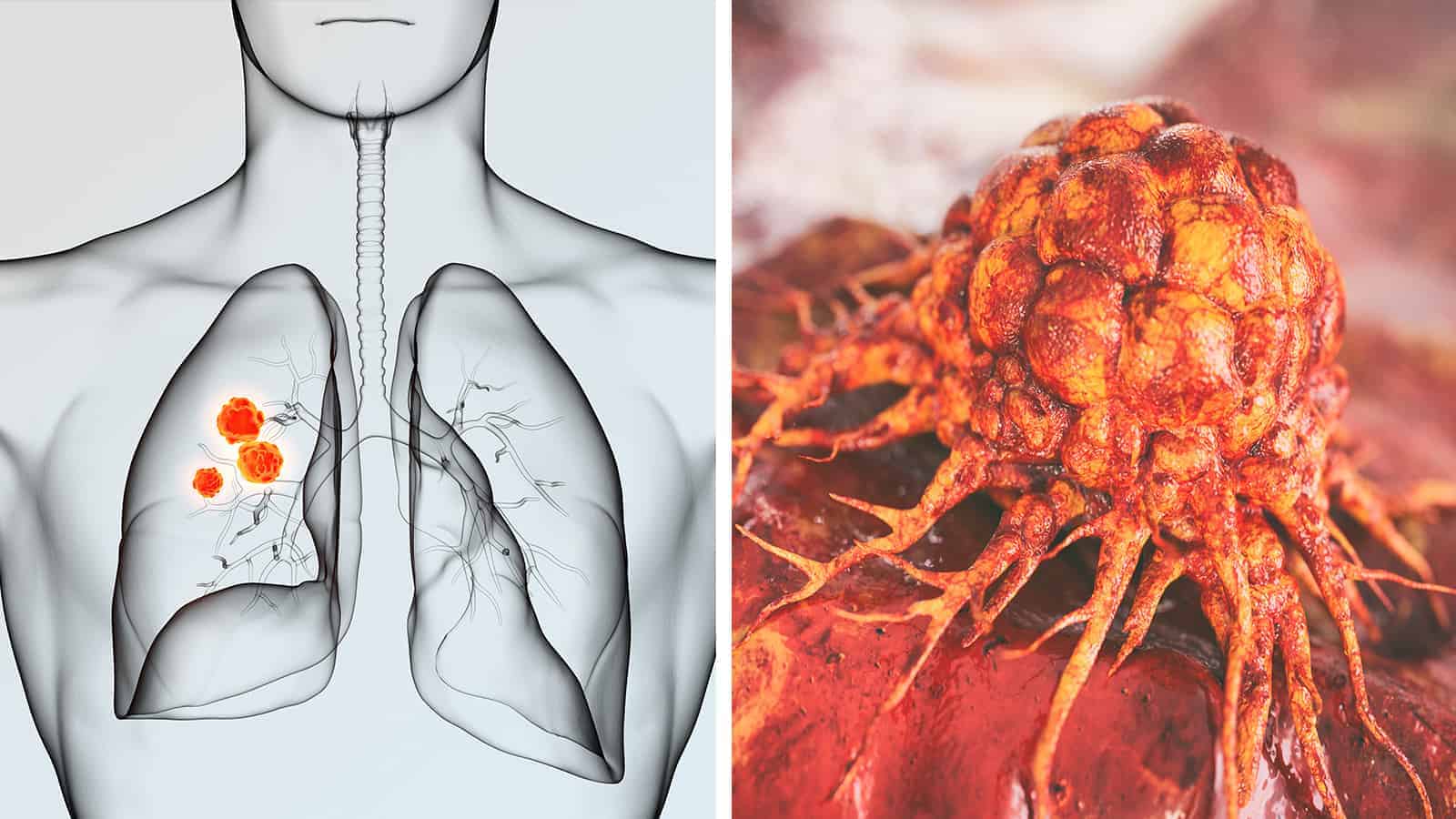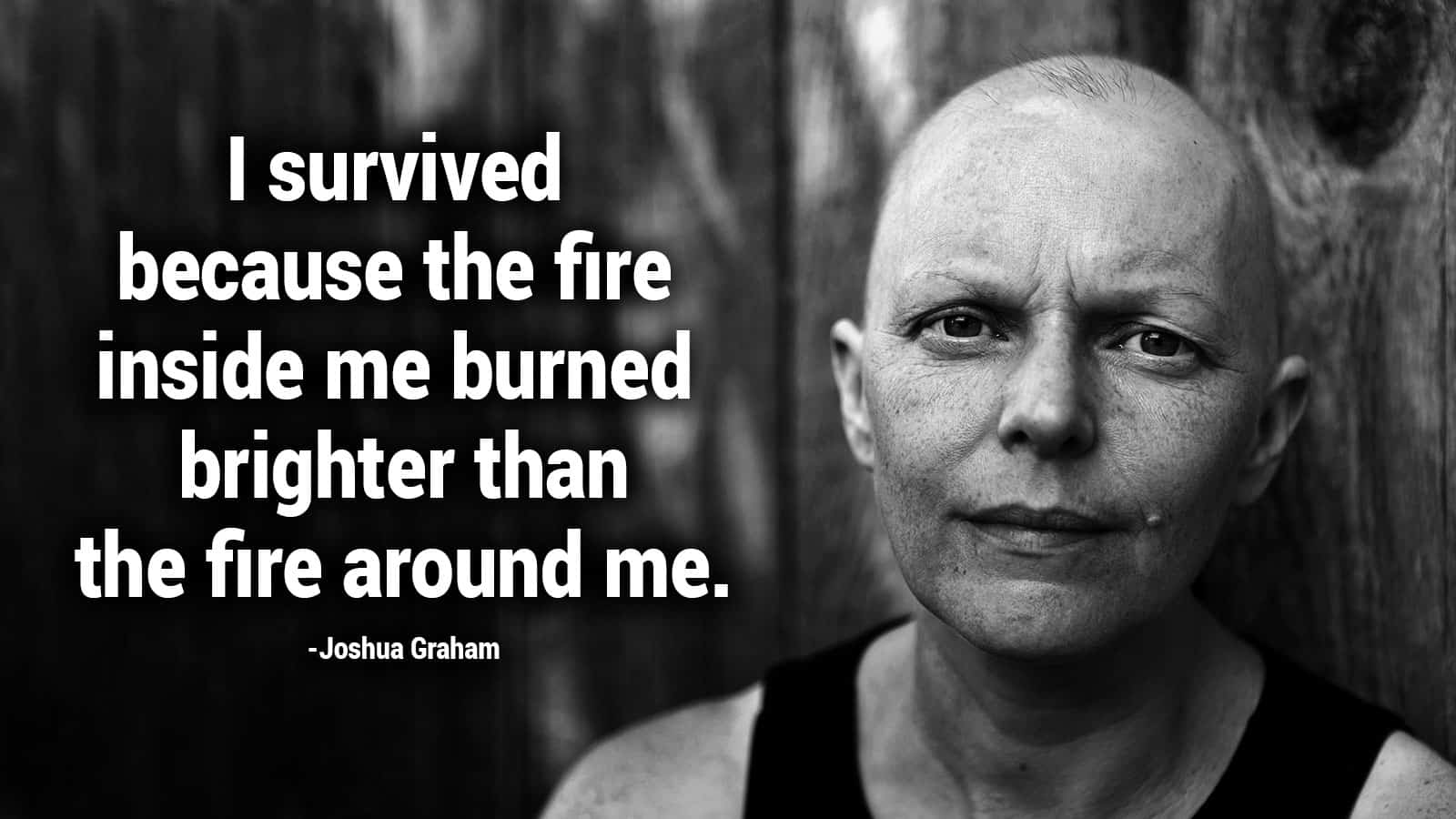Knowing the key lung cancer symptoms can save your life.
Lung cancer is one of the most severe types of malignant cells to form in the body, and according to the American Cancer Society, there are 235,760 new cases diagnosed each year. Additionally, more than 131,880 deaths occur from this malignancy annually. Sadly, it’s the leading cause of death among cancer in the world.
The lungs are like sponges that draw in air and release any of the carbon dioxides you inhale. These vital organs provide the breath of life, so, understandably, those who have compromised lungs have trouble breathing. The most significant risk of developing lung cancer comes from smoking cigarettes.
However, there are many people with this malignancy that have never smoked a day in their life. Those who smoked and quit decrease their chances of this cancer; however, the risk remains as some damage to the lungs is permanent.
Thirteen Key Lung Cancer Symptoms
As with many other forms of cancer, it may be undetectable initially. In the initial stages, a person may feel they have bronchitis or a lingering severe cold. However, once the condition progresses, breathing becomes hard to breathe, making things like walking around the house unbearable.Some folks may mistake lung cancer for asthma or other conditions like COPD. Anytime you have difficulty breathing, it’s essential to get help. Here are the most observed symptoms by oncologists worldwide.
1. Coughing up blood
2. Chest pain
3. Cough or cold that won’t go away
4. Chronic Headaches
5. Pain deep in the bones
6. Weight loss
7. Shortness of breath
8. Hoarseness in your voice
9. Muscle weakness
10. Nausea and vomiting
11. Elevated levels of blood pressure or glucose
12. Confusion or changes in mood
13. Seizures
The Causes of Lung Cancer
Smoking cigarettes is the number one cause of lung cancer, but it’s possible to develop this condition without smoking. For smokers, inhaling the carcinogens found in cigarettes damages the tissues of the lungs. The body’s defense system works hard to fight these toxins, repairing some of the damage.
The problem is that when a person smokes continuously, the body cannot repair the massive amount of injury that occurs. Thus, healthy cells turn malignant and begin to grow. Smoking is not the only way you can develop this type of cancer.
•Radon or Radioactive Gas
Another primary lung concern is inhaling a radioactive gas known as radon. Radon can be found in homes and businesses across the world. It seeps into these dwellings through tiny holes.
Radon can be found naturally in the earth, and since it’s colorless, odorless, and tasteless, you can be exposed without knowing. Once a genetic mutation begins, a person’s risk of developing lung cancer increases.
•Asbestos
Lastly, asbestos is another common cause of lung cancer. Asbestos was often used as an insulator in many buildings before the 1990s. Since this is a naturally occurring fibrous silicate mineral, no one thought it was a problem to use it for its protective properties.
However, the asbestos lung is where a person has been exposed and has compromised breathing, but it can quickly turn into cancer.
•Other Heavy Metals
Cadmium and selenium are also heavy metals that can increase the chances of developing this malignancy, but it’s not as prevalent as other exposure methods.
•Untraceable
Sadly, there may be no traceable way that a person develops lung cancer, so the problem remains a mystery. Oncologists see many cases where sidestream or second-hand smoke causes tumors, and the American Cancer Society validates that just being around someone who smokes exposes a person to 70 dangerous toxins.
Understanding the Types of Lung Malignancies
When lung cancer develops, it’s scary, and you question whether you will live and your quality of life if you survive. The medical community divides this cancer into two categories, and understanding these classifications will help you better prepare for the future.Oncologists identify the type of cancer you have by looking at the cells under a microscope. Small cell or large cell cancer is treated differently.
•Small Cell
Oncologists observe small cell lung cancer in those who have smoked for years and did so heavily. Though it’s not as common as non-small cell, it tends to be more serious, and the prognosis is grim.
The American Cancer Society states that only 60 percent of individuals with this cancer will make it past the five-year mark, and only about ten percent will recover. The average life expectancy after diagnosis is a mere 14-20 months. You must stop smoking, and if you need help, many cessation programs can assist you in quitting.
•Non-Small Cell
Non-small cell lung cancer is an umbrella term that contains several subcategories within it. While it’s not as severe as a small cell cancer, it certainly still brings about major issues and lung cancer symptoms. The categories within this section are:
•Squamous cell carcinoma
•Adenocarcinoma
•Large cell carcinoma
The treatment options for the lung cancer symptoms associated with non-small cells are often easier to care for. While it’s still a severe condition, it’s possible to recover. The goal is to slow or stop the progression and make breathing easier.
The key in treatment is identifying the malignancy’s stage and how far it has spread. Some cancers can be removed if caught before they metastasize.
Complications of Lung Cancer
As the malignancy progresses, the lung cancer symptoms will intensify. Additionally, further complications can result from cancer spreading to other parts of the body. The most common complications are as follows.
• Reduced Lung Function
As cancer progresses, blockages may occur in the airways. Cancer cells can grow in the bronchial tubes, making breathing a challenge. Pleural effusion is also a concern.
When tumors press on the lungs, it reduces your ability to breathe. Thus, it becomes easier for you to develop pneumonia.
• Chances of Infection Increases
One of the most annoying lung cancer symptoms you must deal with is persistent infections. Since these vital organs are compromised, it’s easier for you to develop bronchitis or pneumonia. Additionally, the decrease in your immunity also makes you more susceptible.
• Hemoptysis Coughing Up Blood
It’s not uncommon for you to cough up blood as your cancer progresses. It may be a bright red or rust-colored, but any hue is cause for concern. When the tumors irritate the airways, it causes bleeding. It’s estimated that about one-fourth of those affected experience these lung cancer symptoms.
• Increased Calcium Levels
Higher than normal calcium levels in the blood can cause your body to become hypercalcemic. To help fight cancer, the body will release a hormone-related protein that elevates this mineral. When this occurs, some common symptoms observed are increased thirst, stomach pain, dizziness, weakness, and the need to urinate more frequently.
• Blockage in The Heart
Though it’s rare, lung cancer can make its way to the heart. Once a tumor grows in this area, it will pressure the veins and arteries. This complication makes you more susceptible to a heart attack, stroke, or congestive heart failure.
• Esophageal Difficulties
Cancer can spread to the esophagus area, where it will cause you to experience problems eating. It can cause discomfort as food passes when cancer is present in this region as the walls of the esophagus become inflamed and raw.
• Compression of The Spinal Cord
Cancer can metastasize to the spine and cause the vertebrae in this area to be compressed. After being under pressure, they can collapse. If you have unrelenting back pain, leg, and arm weakness, as well as bladder dysfunction, it can indicate spinal cord compression.
• Pain and Discomfort
One of the most prevalent lung cancer symptoms you will experience is pain. Cancer destroys good tissue and puts pressure on the area as it grows. Additionally, fluid will fill the lungs and cause it hard to take a deep breath or even laugh.
Pain doesn’t occur until the advanced stages, and natural ways exist to manage the pain and combat cancer.
Final Thoughts on Lung Cancer Symptoms
The American Cancer Society states that lung cancer is the third most common cancer type in this country. The most prevalent is skin cancer, which is one of the most treatable types of malignancy. If you develop any lung cancer symptoms, you must seek treatment immediately.
Time is of the essence when you’re dealing with such severe cancer that has such a grim prognosis. Early detection is the key to saving your life, and the sooner you catch this disease, the better your chances of survival. Thankfully, many homeopathic methods exist to treat malignancy without invasive techniques.
Don’t give up hope if you or a loved one has been diagnosed with lung cancer. There are options out there to help you during this difficult time.
(Editor’s Note 7/1/2021: Removed references to sage, curry and oregano within the article)


















